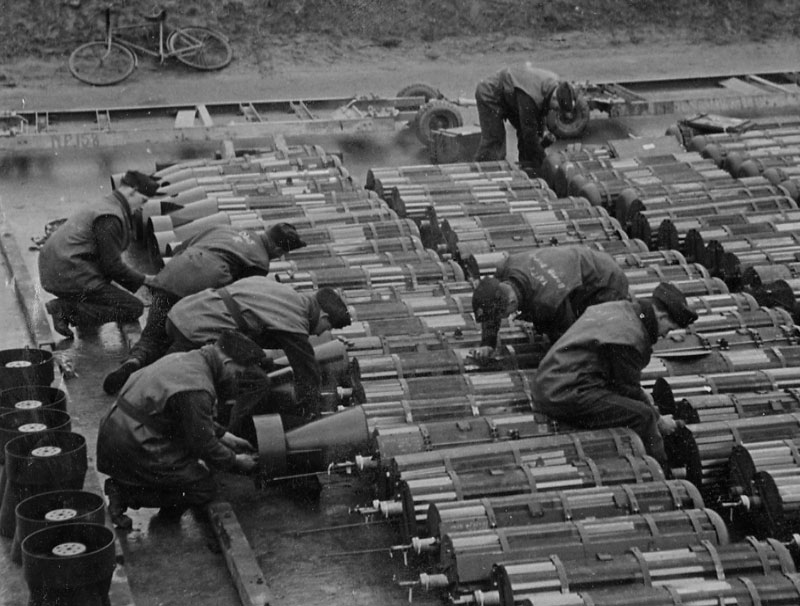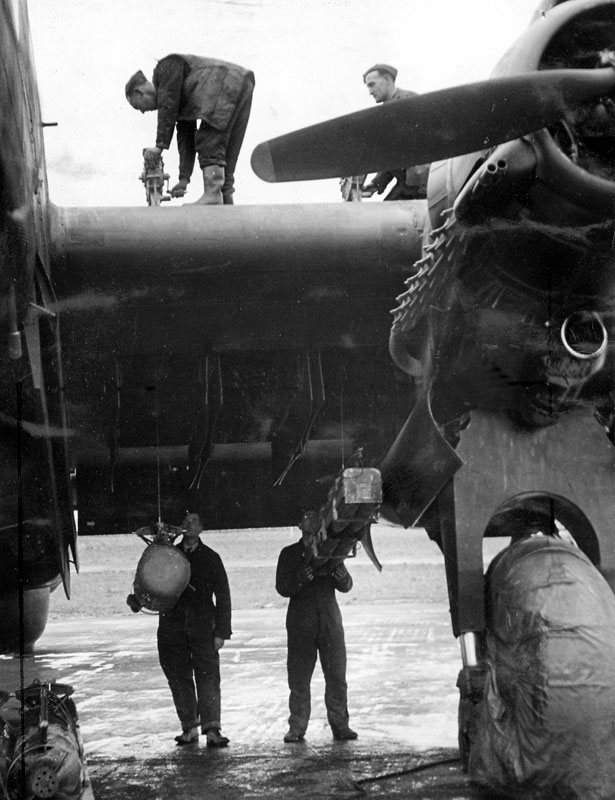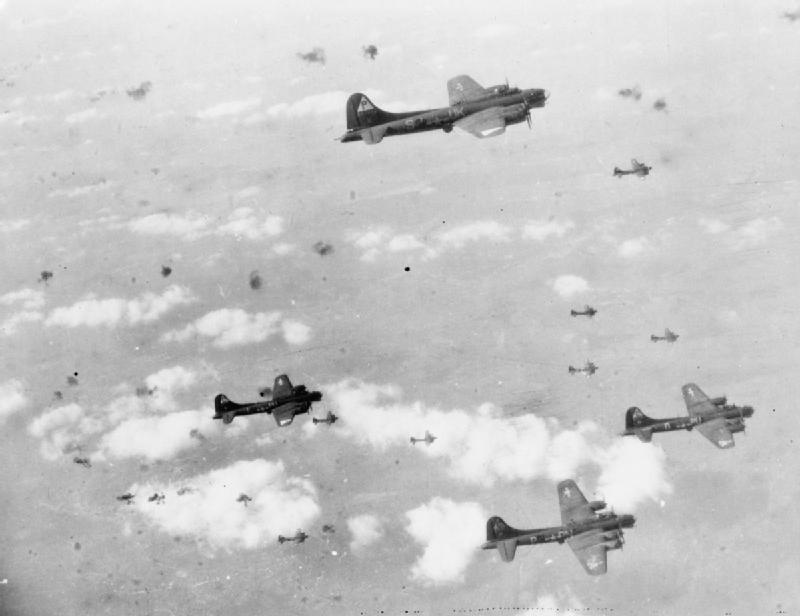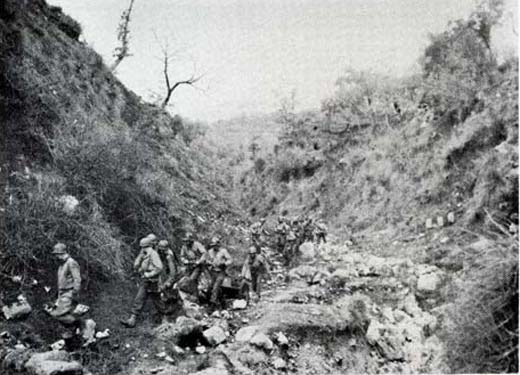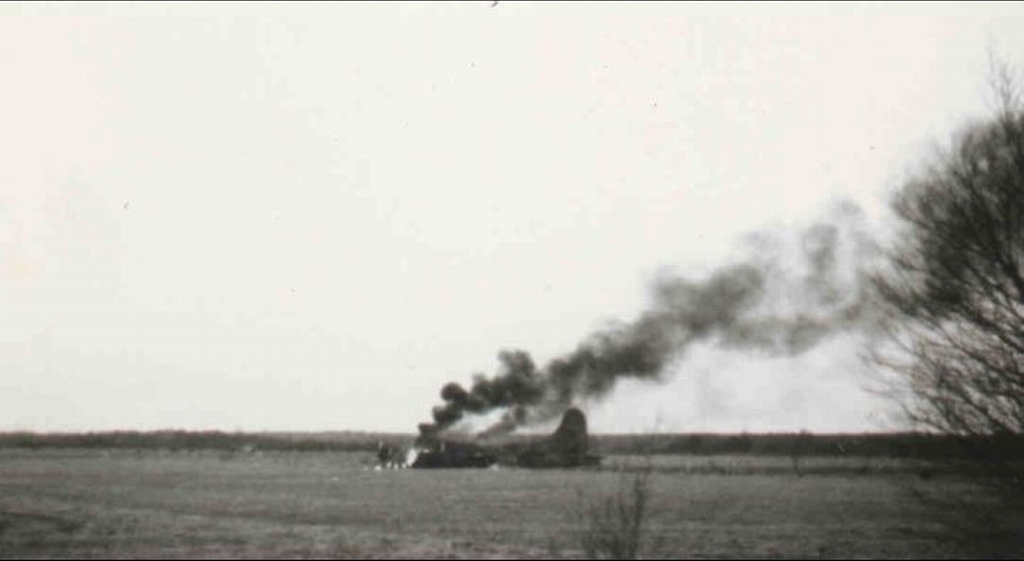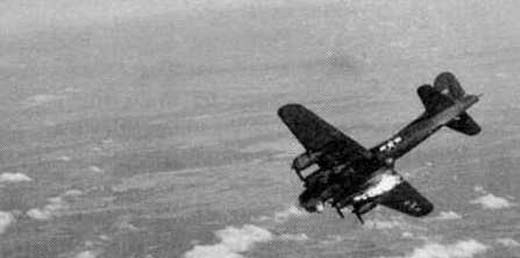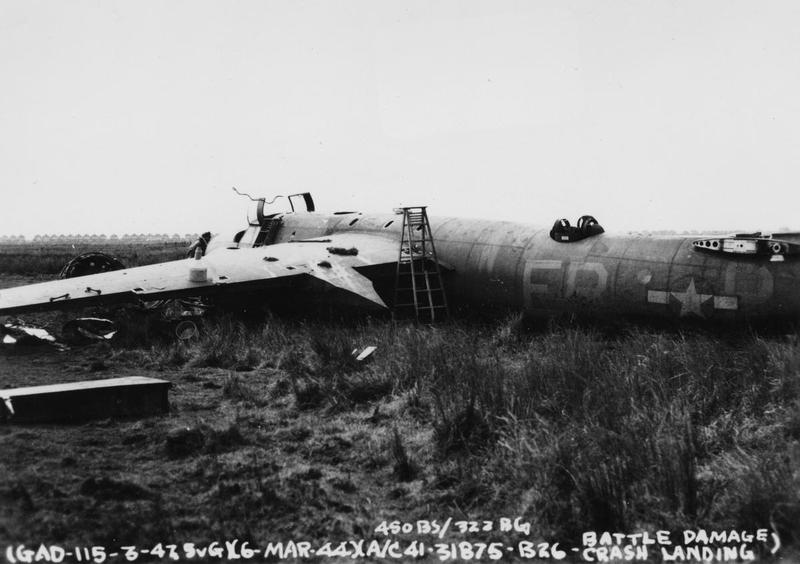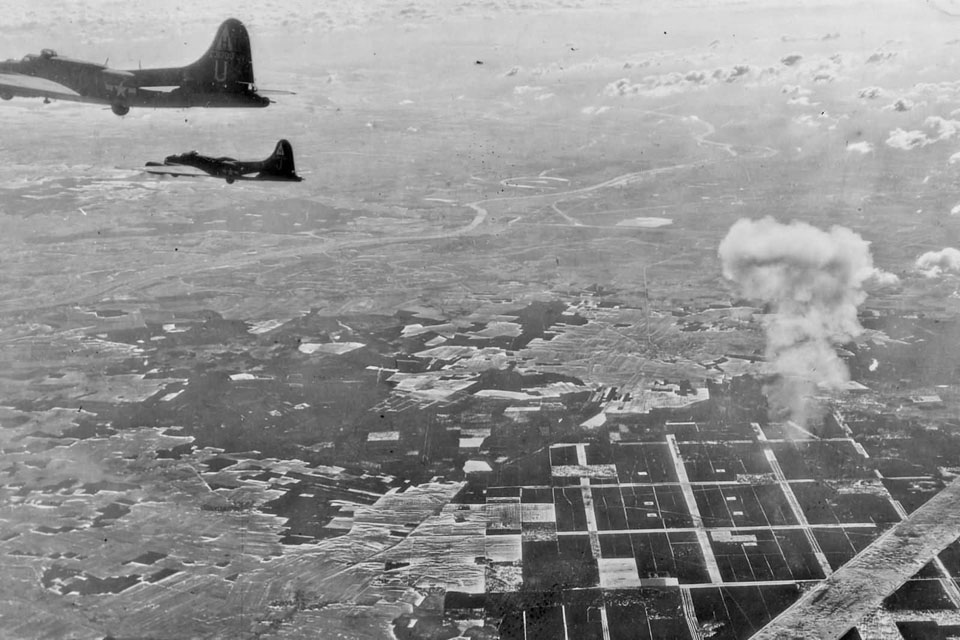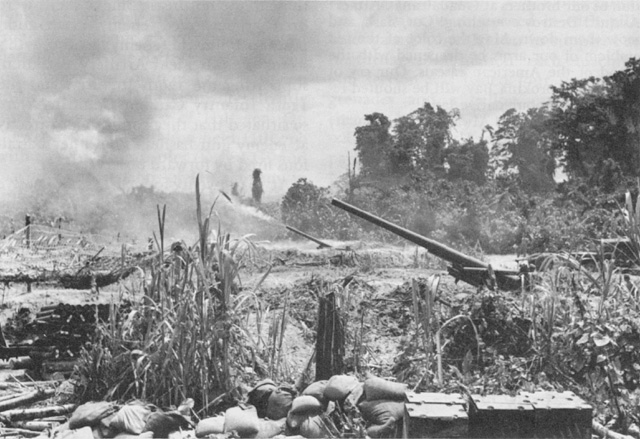Admiralty Islands
The 12th Cavalry Regiment lands on Los Negros and joins up with the units pursuing the retreating Japanese. The 2nd Squadron, 7th Cavalry (2/7 Cavalry), attack north to protect the flank of the 12th Cavalry Regiment, which attacks with artillery, tanks, and engineers attached to capture Salami Plantation and Salami beach. These units are also to open Seeadler Harbor to prepare for additional landings. The beachhead is widened to take in the villages of Salami and Porlaka.
[Air Operations, Bismarcks
V Fighter Command P-38 and P-39 dive-bombers attack the Cape Hoskins airfield on New Britain in support of a US Marine landing on the Willaumez Penensula aimed at securing Talasea.
[Air Operations, CBI
BURMA- 4 490th Medium Bomb Squadron B-25s attack a bridge spanning the Sittang River and adjacent antiaircraft batteries. 18 10th Air Force P-40s and P-51s attack a bridge at Sawnghka and dumps at Walawbum.
- 14 490th Medium Bomb Squadron B-25s sow mines around Kham Yi Island, and attack Prong Island and a marshalling yard at Pegu.
Air Operations, Europe
US heavy bombers raid Berlin for the first time. A force of 660 (730?) B-17s and B-24s of the 8th Air Force bombers is sent and 69 are lost. They bomb the city and the nearby Erkner ball-bearing works. Escorting the bombers are 796 P-38s, P-47s and P-51s plus 2 RAF Mustang squadrons. The US aircraft fight running battles with German interceptors form the Dutch coast to Berlin. There is heavy flak over the target.
RAF BOMBER COMMANDEvening Ops:
- 261 Halifaxes and 6 Mosquitos of Nos. 4, 6 and 8 Groups make the first in a series of raids on railway targets in France and Belgium in preparation for the invasion. 1 site hit is the Trappes marshalling yards on the Paris-Brittany line.
- There are no losses.
- 15 Mosquitos are sent to Hannover, 6 to Kiel and 1 to Krefeld, there is 1 RCM sortie, and 30 aircraft are on Resistance operations.
- There are no losses.
|
|
GERMANY:
- In the war's first attack on Berlin by USAAF day bombers, 504 8th Air Force B-17s and 226 B-24s are dispatched against industrial targets in and around the city. However, a total of 474 B-17s and 198 B-24s attack a wide variety of secondary targets and targets of opportunity in the Berlin area through breaks in the heavy cloud cover. Luftwaffe fighter opposition is concentrated and fierce.
- 53 B-17s and 16 B-24s are lost, 293 B-17s and 54 B-24s are damaged, 5 B-17s and 1 B-24 are written off; crew losses: 17 killed, 31 wounded, 686 missing
- Escort and support for the heavy bombers is provided by a record 801 USAAF fighters, 86 P-38s, 615 P-47s, and 100 P-51s. VIII Fighter Command fighters down a record Luftwaffe fighters and attack aircraft along the bomber routes and over Berlin between 1130 and 1500 hours.
- 5 P-51s, 5 P-47s, and 1 P-38 are lost with their pilots
FRANCE:
- 260 IX Bomber Command B-26s attack V-weapons sites, the Beauvais/Tille Airdrome, and a marshalling yard at Hirson, but 50 other B-26s and A-20s dispatched against a marshalling yard at Creil abort because of bad weather.
ITALY:
- XII Air Support Command A-36s attack motor vehicles and rail cars.
- XII Air Support Command P-40s attack a town and gun emplacements near the Anzio beachhead.
Air Operations, New Guinea
V Bomber Command B-25s attack Japanese Army positions on Los Negros Island. V Bomber Command B-24s attack an airfield and other targets in the Awar-Nubia area. RAAF bombers and V Fighter Command P-39s attack Japanese Army ground troops near Madang.
[Arctic
Swordfish 'X' of 816 NAS from HMS Chaser spots U-973 about 15 miles ahead of convoy RA-57. The aircraft attacks firing 6 rockets, of which one was seen to hit. The U-boat begins to weave erratically before sinking bow first.
| Class | Type VIIC |
| CO | Oberleutnant zur See Klaus Paepenmoller |
| Location | Arctic |
| Cause | Air attack |
| Casualties | 49 |
| Survivors | 2 |
Argentina
The Foreign Ministry repudiates the breaking off of relations with the Tripartite Pact countries.
[Battle of the Atlantic
U-744 leads escorts of convoy HX-280 on quite a chase. Over 291 depth charges are dropped in an attempt to subdue the U-boat. Having been under for over 24 hours, the U-boat commander decides to surface. The Canadian corvette HCMS Chilliwack happens to be just ahead of the U-boat. Chilliwack opens up with all her guns that she can bring to bear. U-744 is clearly sinking, so she is scuttled.
| Class | Type VIIC |
| CO | Oberleutnant zur See Heinz Blischke |
| Location | Atlantic |
| Cause | Depth charge/scuttling |
| Casualties | 12 |
| Survivors | 40 |
Bougainville
Big Japanese forces are located near a hill overlooking the Cape Torokina beachhead in Empress Ausgusta Bay. Expecting a counterattack, the Americans try to extend and strengthen their perimeter, but they are not able to dislodge the Japanese from any of the positions on some hills that constitute a danger to the beachhead.
[CBI
BURMAmChiang Kai-shek orders Gen Stilwell to hold up the offensive in the northeast of the country for a time in view of the Japanese Arakan offensive. However, during the day there are violent encounters between Chinese and American forces and the Japanese, who carry out a number of fierce counterattacks and suffer heavy losses. In one such attack about 400 Japanese are killed in an unsuccessful bid to cross the Tanai River. The arrival of the 1st Provisional Tank Group and GALAHAD forces at Kasak Ga ends the Japanese hopes of victory. A co-ordinated assault on Walawbum by the two groups are planned for the 7th. The Japanese withdraw from Walawbum.
[Eastern Front
The 3rd Ukraine Front begins a new offensive, cutting the Odessa-Lvov rail line and capturing Volochisk.
SOUTHERN SECTORThe 1st Ukrainian Front pushes deeper into the German rear as it develops its attack, a 30-mile hole having been punched between the 4th and 1st Panzer Armies. Volochisk falls to the 3rd Guards Tank Army. The 2nd Ukrainian Front continues to widen the break between the 8th Army and 1st Panzer Army.
Malinovsky now begins his offensive. Following the customary arty barrage, the 8th Guards and 46th Armies attack the junction of the 8th and 6th Armies, striking the XXX Corps particularly hard. Fierce fighting rages, but by dusk both the 8th Guards and 46th has broken the German line. The Russians immediately press into the rear of the 6th Army toward Nikolayev in an effort to isolate it.
[Mediterranean
The Convoy UGS-33, en route from New York to Alexandria, Egypt, strays into a minefield off Tunis. The US freighter Daniel Chester French is sunk by mines losing 9 of the 44-man crew, 4 of the 28-man Armed Guard and 24 of the 86 army passengers. The British rescue tug Charon, steamer Thelma and tug Rescue pick up the survivors. The freighter Virginia Dare is damaged irreparably in the same minefield with no casualties.
[New Britain
The 5th Marines land on the west coast of Willaumez Peninsula near Volupai and establish a 2,000 yard bridgehead. The marines locate a large Japanese force, which is consolidating after the retreat from western New Britain. The 1st and 2nd Battalions of the 5th Marines land and, supported by tanks, move inland. Two tanks are immediately disabled, one by mud and the other by mines. 5th Air Force P-39s and P-38s from Cape Gloucester airfield strafe and bomb the Camp Hoskins-Talasea area. Japanese mortar attack on the beachhead kills 9 marine artillerymen and wounds 39 others.
[Pacific
- The US submarine Scorpion (SS-278) is reported as presumed lost in the Pacific Ocean area.
- The US submarine Nautilus (SS-168), in an attack on a Japanese convoy about 420 miles north-northwest of Saipan, sinks the transport America Maru (6070t) and survives a counterattack by the torpedo boat Otori. [
United States, Planning
Gen MacArthur accepst RENO IV, a plan that proposes an offensive along western New Guinea, followed by a strike north to Mindanao in the Philippines. From Mindanao, US forces will be in position to move into the China-Formosa area. A long-range bomber offensive against Japan can be launched from Luzon. With the RENO IV plan, MacArthur is determined not to take a secondary role to the navy and uses the recapture of the Philippines as the focus of the American strategic bombing campaign against Japan rather than the Mariana Islands. He also believes that the recapture of the Philippines is essential to the restoration of American honor.
[Images from March 6, 1944
|
|
|
|
|
|
|
|
P-51s Escort All the Way to Berlin |
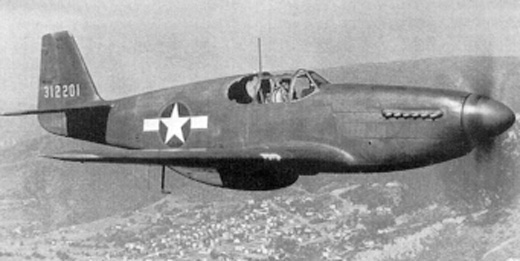 |
